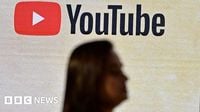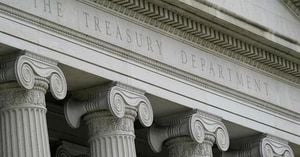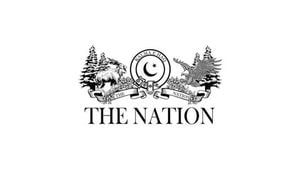In a significant policy reversal, the Australian government announced on Wednesday, July 30, 2025, that YouTube will now be included in its groundbreaking legislation banning children under 16 from holding accounts on social media platforms. This decision, which marks a departure from the government’s earlier stance, aligns YouTube with other major platforms such as Facebook, Instagram, Snapchat, TikTok, and X, all of which will be subject to the same age restrictions starting December 10, 2025.
The original legislation, passed in November 2024, aimed to protect young Australians from the harmful effects of social media by prohibiting under-16s from creating accounts. However, YouTube was initially exempted, considered more of a video-sharing service than a social media platform. This exemption sparked controversy and complaints from other platforms, including Meta and TikTok, who argued that YouTube's interactive features and algorithmic content recommendations bore strong similarities to social media.
Communications Minister Anika Wells explained the government’s change of heart by citing recent evidence from Australia’s independent eSafety Commission. A survey conducted between December 2024 and February 2025 involving nearly 3,500 children aged 10 to 17 revealed that 37% of minors reported encountering harmful content on YouTube—the highest rate among social platforms. Harmful content included sexist, misogynistic, hateful rhetoric, dangerous online challenges, fight videos, and content promoting unhealthy eating or exercise habits.
“Four out of 10 Australian kids report that their most recent harm was on YouTube,” Wells told reporters, emphasizing that the site employs persuasive design features common to social media, such as infinite scroll, autoplay, and algorithmic feeds. “Our kids don’t stand a chance, and that is why I accepted the eSafety recommendation that YouTube should not be treated differently from other social media platforms.”
Under the new rules, children will still be able to watch YouTube videos, but will be prohibited from creating accounts, which are necessary for uploading content or interacting with other users. YouTube Kids, a separate app designed for younger audiences that does not allow video uploads or comments, remains exempt from the ban.
The legislation places the responsibility squarely on social media companies to enforce these age restrictions, requiring them to deactivate existing accounts of underage users and prevent the creation of new ones. Failure to comply could result in fines of up to 50 million Australian dollars (approximately 33 million USD). Platforms must also implement “age assurance mechanisms” that do not necessarily require users to upload personal identification documents like passports or driver’s licenses, but instead use alternative verification methods. Minister Wells noted, “Platforms know with deadly accuracy who we are… so they know that you are over 16.”
The government commissioned age assurance technology trials earlier this year, with a preliminary report in June 2025 finding that age verification can be done in a “private, robust and effective” manner, though no single solution is foolproof. The report also raised concerns about platforms potentially collecting excessive personal data to satisfy regulatory demands, which could risk privacy breaches.
Despite the ambitious scope of the ban, Wells acknowledged it will not be perfect. “Kids, God bless them, are going to find a way around this,” she said, humorously speculating that teenagers might flock to platforms like LinkedIn or use VPNs to circumvent restrictions.
Prime Minister Anthony Albanese framed the legislation as a protective measure for Australian families. In a post on X, he declared, “Protecting kids online means taking on some tough problems, so we’re banning social media accounts for under 16s.” He added, “Young Australians will benefit from three more years free from algorithms, to grow, to connect and to build resilience in the real world.” Albanese also announced plans to campaign at a United Nations forum in New York in September 2025 to seek international support for similar bans globally, noting that “this is not an Australian experience” but a common concern worldwide.
YouTube, owned by Alphabet Inc., expressed disappointment with the government’s decision, stating that it “reverses a clear, public commitment to exclude YouTube from this ban.” The company reiterated that YouTube is a video-sharing platform with a vast library of free, high-quality content increasingly viewed on TV screens, insisting “It’s not social media.” A spokesperson said the company would “consider next steps and continue to engage with the government,” while omitting comment on reported legal threats to challenge the ban.
The announcement has set the stage for a potential legal battle reminiscent of Alphabet’s 2021 dispute with the Australian government over news content payments. Yet, Minister Wells remained undeterred, asserting in Parliament, “We will not be intimidated by legal threats when this is a genuine fight for the wellbeing of Australian kids.”
Support for the ban extends beyond government corridors. Angela Falkenberg, president of the Australian Primary Principals Association, praised the legislation, noting that teachers “will be judicious” in curating content for students. Meanwhile, cybersecurity experts like Adam Marre of Arctic Wolf welcomed the move as a critical step in countering the unchecked influence of big tech and combating the spread of misinformation, which has been accelerated by artificial intelligence on platforms like YouTube.
Exemptions to the ban include online gaming, messaging, education, and health apps, which are considered to pose fewer risks to children. The government’s approach reflects a nuanced understanding of digital harms, targeting platforms with addictive design features and high exposure to inappropriate content, which have been linked to social isolation, sleep disruption, poor mental and physical health, and low life satisfaction among youth.
As December approaches, Australian social media companies must finalize their compliance strategies. The government’s forthcoming report on age assurance technologies will further shape enforcement. Meanwhile, parents, educators, and policymakers worldwide are watching closely as Australia pioneers this bold experiment in digital child protection.





